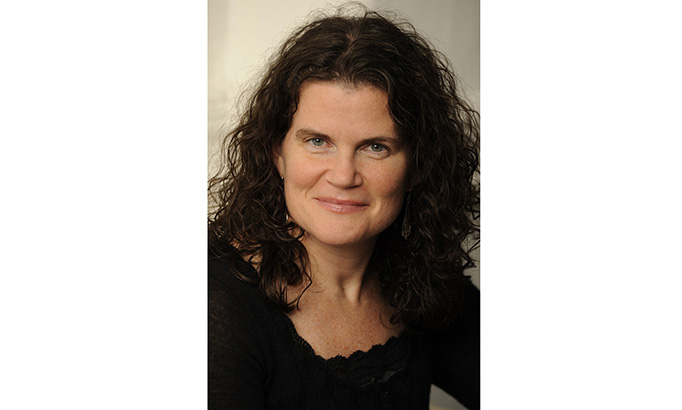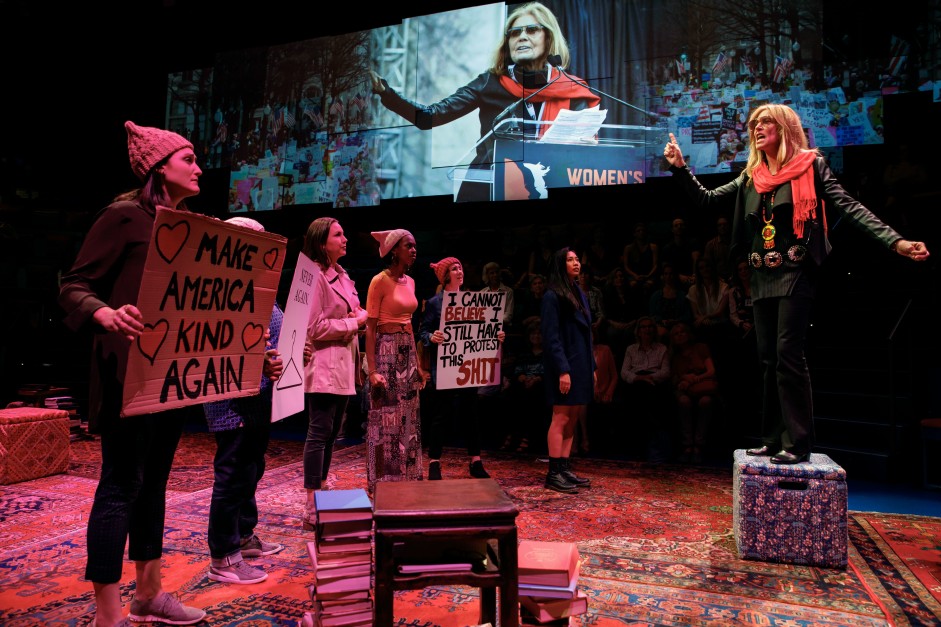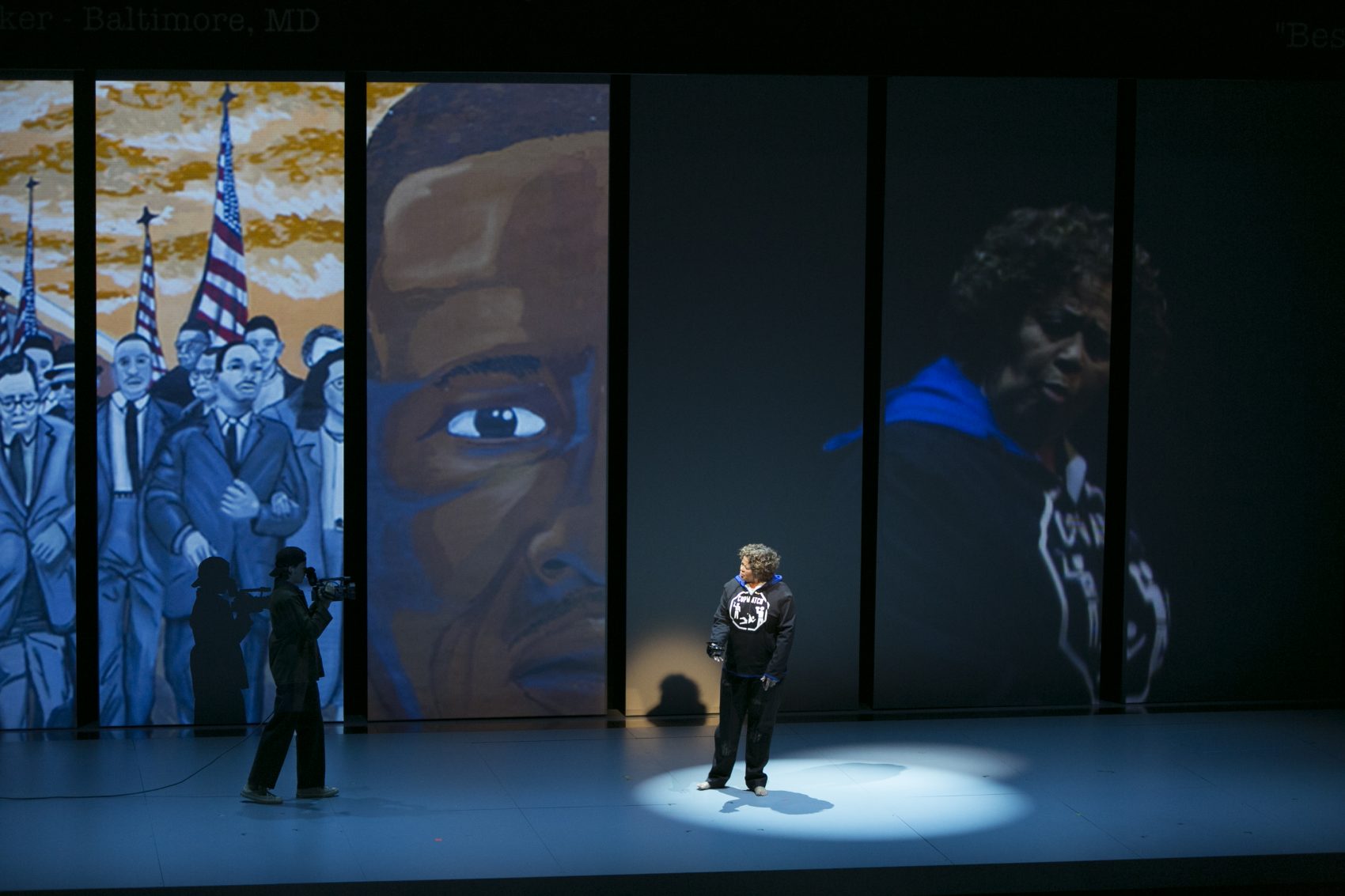Projection designer Elaine J. McCarthy is the 2020 winner of the USITT Digital Media Commission’s Distinguished Achievement Award. These awards honor individuals who have established meritorious career records in specific fields of expertise in any area of design or technology in the performing arts or entertainment industry. McCarthy will be honored in a special session at USITT on April 2, in Houston, TX. Live Design chats with McCarthy, who was a featured speaker at LDI2019, in a two-part article: Part One about her career, work, and take on things in general, and Part Two specifically about updates to the projection technology for her designs at Wicked, now in its 16th year on Broadway.
Live Design: How did you choose projection design as a career?
Elaine J. McCarthy: I did not choose projection design as a career so much as deliberately/accidentally wandering into it after 28 years of exploration. Growing up, I followed interests in architecture, design, photography, theatre, technology, and storytelling. Working against the advice of the times to choose something and specialize, I chose instead to seek a career that would fit my interests and make me happy.
My journey took me through a broad variety of coursework and employment over those years as I pieced things together. Much of that work resulted in me at 25 moving to New York from Boston to attend the Graduate Design Department at NYU’s Tisch School of the Arts as an undergraduate. Partway through my studies, I transferred to the Photography & Imaging Department, from which I ultimately graduated with a BFA (after 17 years — I like to joke that I have a PhD in undergrad)!

While at NYU, a good friend, set designer Lauren Helpern, suggested I meet Wendall K. Harrington, whom she knew from working with David Gallo. When I met Wendall, I realized I had finally found my needle in the haystack! Projection design brought together all of my interests that had been accumulating through the years. Three years working in Wendall’s studio became an informal graduate school of projection design for me. I have been practicing the art and craft ever since — 25 years and counting!
LD: What are some of your recent projects? And what were the design challenges?
EJM: Over the past few years, I have worked on projects that have been political in nature. I designed Anna Deavere Smith’s Notes From The Field, an exploration of this country’s school-to-prison-pipeline plaguing minority communities (Leonard Foglia, director). I also designed Emily Mann’s Gloria: A Life, the story of Gloria Steinem, from her childhood through her continued activism in the women’s movement today, in her 80s (Diane Paulus, director).
Working on these projects has required that I prioritize from the onset, choosing a system that will allow access to a wider variety of presenters than has been typical for me. The design teams for these productions have each time agreed that QLab was the solution, due to its broad use in the industry and academia, as well as its affordability. I feel pleased to be able to create works that seek to reach and engage broader audiences, such as schools and colleges.

I have also done a great deal of opera work in recent years. In fact, it has been my honor to design projections for seven world premiere operas—six English-language and one mariachi! It is an extremely interesting time to be working in opera, as it seeks to redefine itself in a way that works against many of opera’s stereotypes and appeal to a broader audience.
I find great potential in the “operatic” quality of opera; the scale of opera suits the scale of projections. The opera stage can handle projections of an exploding volcano as a singer leaps into it; or the summit of Everest where a climber is trapped in a blizzard.
I believe this combination of seeking of redefinition and ability to handle scale is what will likely make the opera world suited to many of the newer technologies such as VR and AR. And although I am a very big fan of just “R,” I am eager to explore storytelling with these technologies.

LD: In a world buzzing with visual stimulation from all sides, how does a projection designer make a statement?
EJM: I think a projection designer makes a statement by resisting the temptation to choose what is fast, easy and convenient. I certainly am challenged by it in my own work. A universe of imagery is available at our fingertips! Technology allows us to be bigger, bolder, brighter, flashier…faster. Just because you can, does not necessarily mean you should. It is vital for media designers to take time to do the work and do the story justice.
There is a visceral element in design that I think people are moving too fast to feel, appreciate, and incorporate these days. This speed is undermining the audience’s experience.
As a Lucille Lortel Award voter, I have been in the fortunate position this past year to see dozens of shows. As I revel in the unprecedented number of shows incorporating projections, I have noticed a lack of attention to the details. Good design takes rigor and attention to detail. This is not me saying that all of my work has been sheer perfection — I have a decent list of misses for certain. But I recognize that my failures had one thing in common, and that is a lack of thoroughness and connection to the story.
In response to the work I have been seeing, I have started a list of my “rules” for Projection Design 101:
- Masking, masking, masking: If a projection design is to be effective, it must only appear where it can make the most impact.
- Break the box: Just because the raster is a rectangle, does not mean the content needs to be.
- Create rules for yourself in answering the riddle of the design: Limit fonts, have a reason behind repeated themes, and be able to explain your choices.
- There is a zen to design: Be able to step back, let focus and determination slip away, and watch the show with a clear vision. It is only recently that I have found myself able to do this. It has helped me see/feel what is essential and what is distracting. Try to step back and open your eyes to the broader stage and see what draws your eye for better or worse. Fix or cut the “worse.”
I look forward to continuing to develop this list with my fellow designers (hint, hint…)

LD: What advice would you give to people getting into the business today, in terms of education, assisting, career choices, etc.?
EJM: In terms of education, be sure to submerge yourself in the coursework relating to the history of design — photography, film, fine art, architecture, fashion. You need to feed your visual brain in order to form a robust vision of your own.
Learn the language of imagery — take courses in semiotics and media studies. If you are going to be a maker of imagery, you should understand its power and meaning before you send it out into the world. Actually, I think media studies should be taught starting in middle school these days. If we are going to be consumers of mass media, we should be able to source, read, and interpret it properly.
Regarding assisting, I learned a large percentage of what I know today in all aspects of my life by listening to and observing people more knowledgeable and experienced than me. Every experience can be an education, if you choose to open yourself to the opportunity. I learned how to run a small business by working in a small business. I learned how to prepare a tour by going on tour. I learned how to be a working parent by being the child of and working with working parents.
Most importantly, I can help you learn the tools of projection design. In hiring people, I look for people who are hardworking, responsible, curious, and pleasant to be around 8am-midnight. If you can’t be that, your skill set with tools means less to me.
Bottom-line: Never stop learning, and asking yourself, “What’s next?”
Stay tuned for By Design: Elaine J. McCarthy On Projections, Part Two.